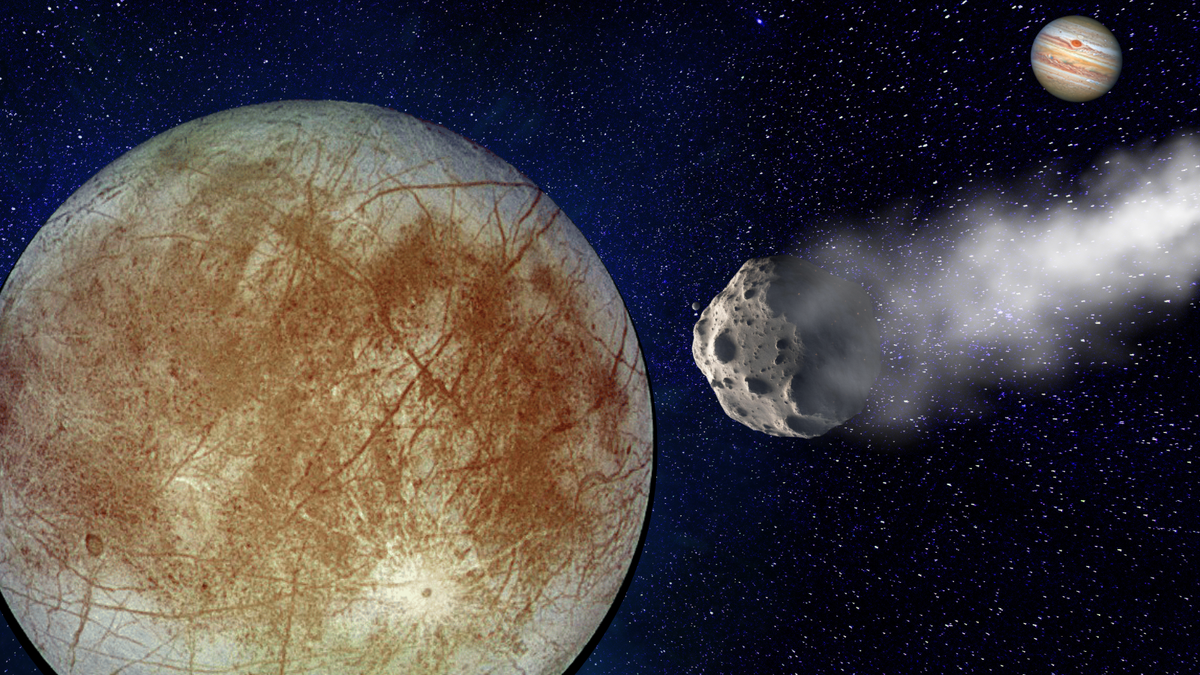Scientists are looking to explore the potential for life in the liquid water oceans beneath the icy shell of Jupiter’s moon Europa, aided by a past celestial event dubbed the “cosmic snowball fight.”
Europa has long been identified as a promising location in the solar system to investigate the presence of basic life forms. This moon, spanning 1,940 miles (3,100 kilometers) wide, is believed to harbor saltwater oceans that surpass the combined volume of Earth’s seas. These vast oceans are thought to exist beneath Europa’s icy exterior, serving as crucial environments for the development of life. However, the conditions for life on Europa, including its potential forms, are intricately linked to the thickness of its icy shell, a factor that has posed challenges for scientists to ascertain accurately.
A recent study by a team of planetary scientists sheds light on this enigma. By analyzing large craters on Europa resulting from impacts and bombardment, the researchers estimated the moon’s ice shell to be approximately 12 miles (20 kilometers) thick. They suggest that this icy shell likely floats atop an ocean with depths ranging from 40 to 100 miles (60 to 150 kilometers) surrounding the moon’s rocky core.
Brandon Johnson, an associate professor at Purdue University College of Science and co-leader of the research team, emphasized the significance of understanding the ice thickness in theorizing about potential life on Europa. The thickness of the ice shell influences the internal processes, material exchange between the surface and the ocean, and overall conditions that could support life forms on the moon.
Life on Europa, if it exists, would likely rely on chemical reactions for energy rather than sunlight-dependent processes like photosynthesis observed on Earth. The constant radiation bombardment on Europa’s surface makes it inhospitable for life to thrive there, necessitating any potential life forms to reside beneath the protective ice layer where sunlight cannot penetrate.
The study utilized observations from the Galileo spacecraft in 1998 to estimate Europa’s ice shell thickness. By examining the characteristics of impact craters, the researchers inferred valuable insights into the moon’s subsurface structure and the potential for material exchange between the ice shell and the ocean beneath.
The research findings suggest a thicker ice layer than previously hypothesized, indicating the likelihood of convection within the ice shell. This revelation underscores the complexity of Europa’s icy shell and its interaction with the underlying ocean, raising questions about the mineral composition within Europa’s oceans and the conditions necessary for life to emerge on this Jovian moon.
The team’s comprehensive study was recently published in a scientific journal, marking a significant advancement in our understanding of Europa’s potential for hosting life.
